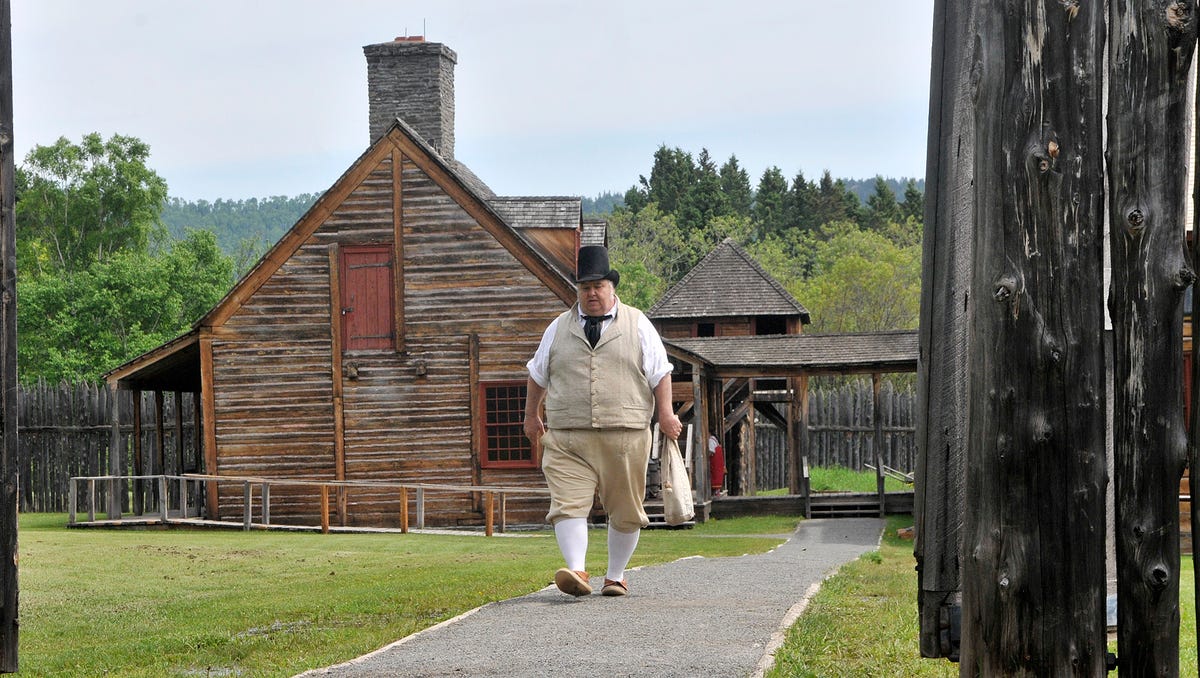Secrets Of Minnesota’s Grand Portage Fur Trading Posts

Ever wondered what life was like for fur traders in the 18th century? Grand Portage in Minnesota holds the key to this fascinating past. Nestled along Lake Superior, this historic site was once a bustling hub for fur trading. Traders, voyageurs, and Native Americans gathered here, exchanging goods and stories. Walking through the reconstructed fur trading posts, you can almost hear the echoes of the past. Imagine the excitement as canoes loaded with pelts arrived, ready for trade. Whether you're a history buff or just curious, Grand Portage offers a unique glimpse into a time when fur was as valuable as gold.
Discovering Minnesota's Grand Portage Fur Trading Posts
Minnesota's Grand Portage holds a rich history of fur trading posts that played a crucial role in the region's development. These posts were bustling hubs of activity, where traders, trappers, and Native Americans exchanged goods and stories. Let's explore some of the most significant fur trading posts in this historic area.
1. Grand Portage National Monument
Grand Portage National Monument is a must-visit for history enthusiasts. This site offers a glimpse into the past with its reconstructed trading post and historic trails. Visitors can learn about the fur trade era through interactive exhibits and guided tours.
2. North West Company Depot
The North West Company Depot was a key player in the fur trade industry. Located near the Grand Portage, this depot served as a vital supply center for traders. Today, visitors can explore the remnants of this historic site and imagine the bustling activity that once took place here.
3. Fort Charlotte
Fort Charlotte, situated at the end of the Grand Portage trail, was a strategic location for fur traders. This fort provided a safe haven for traders and their goods. Visitors can hike the historic trail to Fort Charlotte and experience the same journey that traders undertook centuries ago.
4. Pigeon River Trading Post
The Pigeon River Trading Post was another significant site in the fur trade network. Located near the border of Canada, this post facilitated trade between different regions. Today, visitors can explore the scenic area and learn about the cross-border trade that took place here.
5. Grand Portage Island
Grand Portage Island served as a temporary trading post during the fur trade era. Traders would stop here to rest and exchange goods before continuing their journey. The island offers beautiful views and a sense of tranquility, making it a perfect spot for a historical day trip.
6. Mount Josephine
Mount Josephine, overlooking the Grand Portage, provided a strategic vantage point for traders. From this high point, traders could spot incoming canoes and prepare for their arrival. Hikers can climb Mount Josephine and enjoy panoramic views of the area, imagining the bustling trade activity below.
7. Old Fort William
Old Fort William, though located in Canada, played a significant role in the fur trade network connected to Grand Portage. This fort was a major trading hub and a meeting point for traders from various regions. Visitors can explore the reconstructed fort and learn about the international trade connections of the era.
8. Isle Royale
Isle Royale, located in Lake Superior, was a crucial stop for fur traders. The island provided resources and shelter for traders navigating the lake. Today, Isle Royale is a national park, offering visitors a chance to explore its natural beauty and historical significance.
9. Voyageurs National Park
Voyageurs National Park, named after the French-Canadian fur traders, celebrates the history of the fur trade in the region. The park offers various activities, including boat tours and hiking trails, allowing visitors to experience the same waterways and landscapes that traders once navigated.
10. Kakabeka Falls
Kakabeka Falls, located in Ontario, Canada, was an important landmark for fur traders traveling to and from Grand Portage. The falls served as a natural barrier and a meeting point for traders. Visitors can admire the stunning waterfall and learn about its historical significance in the fur trade network.
Discover Minnesota's Rich History
Minnesota's Grand Portage fur trading posts offer a fascinating glimpse into the past. These sites reveal the daily lives of traders and the significant role they played in shaping the region. Visiting these historic locations, you can walk the same paths as early traders, see authentic artifacts, and learn about the interactions between European settlers and Native American tribes.
Exploring these posts provides a deeper understanding of the fur trade's impact on Minnesota's development. The stories and experiences shared at these sites highlight the cultural exchanges and economic activities that were crucial during that era.
Whether you're a history buff or just curious about the past, the Grand Portage fur trading posts are a must-see. They offer a unique opportunity to connect with Minnesota's heritage and appreciate the complexities of its early economy and culture.

